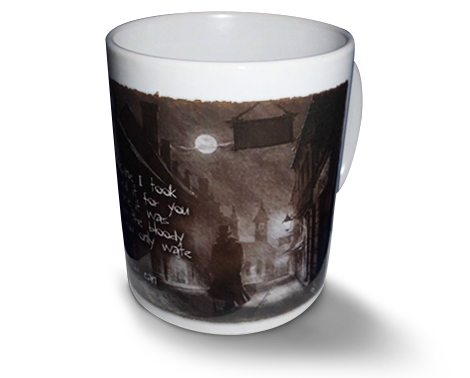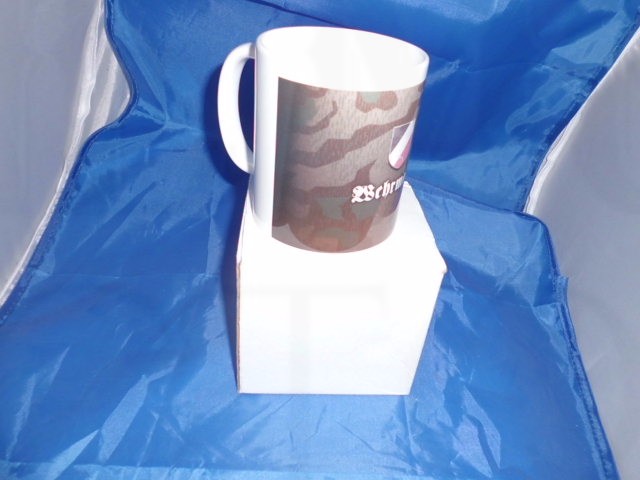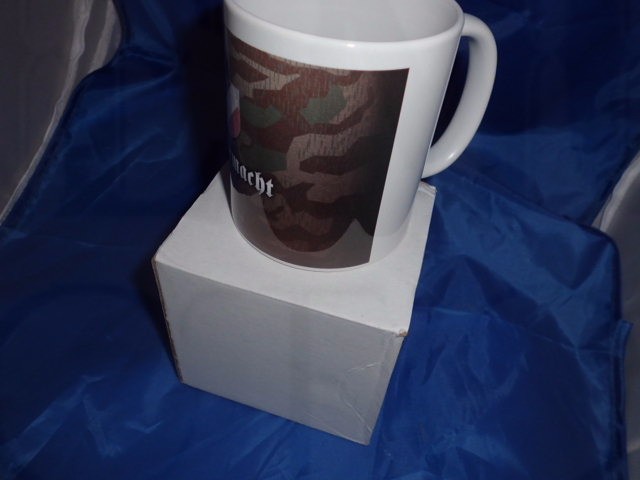Wehrmacht personalised military mug
11oz dishwasher safe Wehmacht Mug
The German Army (German: Heer, German pronunciation: [ˈheːɐ̯]) was the land forces component of the Wehrmacht, the regular German Armed Forces, from 1935 until it was demobilized and later dissolved in August 1946. The Wehrmacht also included the Kriegsmarine (Navy) and the Luftwaffe (Air Force). During World War II, a total of about 13 million soldiers served in the German Army. Most army personnel were conscripted.
Only 17 months after Adolf Hitler announced publicly the rearmament program, the Army reached its projected goal of 36 divisions. During the autumn of 1937, two more corps were formed. In 1938, four additional corps were formed with the inclusion of the five divisions of the Austrian Army after the Anschluss in March. During the period of its expansion by Adolf Hitler, the German Army continued to develop concepts pioneered during World War I, combining ground (Heer) and air (Luftwaffe) assets into combined arms teams. Coupled with operational and tactical methods such as encirclements and the "battle of annihilation", the German military managed quick victories in the two initial years of World War II, prompting the use of the word Blitzkrieg (literally lightning war, meaning lightning-fast war) for the techniques used.
The German Army entered the war with a majority of its infantry formations relying on horse-drawn transport. The infantry remained foot soldiers throughout the war; artillery also remained primarily horse-drawn. The motorised formations received much attention in the world press in the opening years of the war, and were cited as the main reason for the success of the German invasions of Poland (September 1939), Norway and Denmark (April 1940), Belgium, France and Netherlands (May 1940), Yugoslavia (April 1941) and Operation Barbarossa, the invasion of the Soviet Union (June 1941). However their motorised and tank formations accounted for only 20% of the Heer's capacity at their peak strength.
Oberkommando des Heeres (OKH) was Germany's Army High Command from 1936 to 1945. In theory the Oberkommando der Wehrmacht (OKW) served as the military General Staff for the German Reich's armed forces, coordinating the Wehrmacht (Army Heer, Navy Kriegsmarine, and the Air Force Luftwaffe) operations. In practice OKW acted in a subordinate role as Hitler's personal military staff, translating his ideas into military plans and orders, and issuing them to the three services. However, as the war progressed the OKW found itself exercising increasing amounts of direct command authority over military units, particularly in the west. This created a situation where by 1943 the OKW was the de facto command of Western Theatre forces while the Army High Command (OKH) is the same on the Eastern Front.
The Abwehr was the Army intelligence organization from 1921 to 1944. The term Abwehr (German for "defense", here referring to counter-intelligence) was used as a concession to Allied demands that Germany's post-World War I intelligence activities be for "defensive" purposes only. After 4 February 1938, its title was Overseas Department/Office in Defence of the Armed Forces High Command (Amt Ausland/Abwehr im Oberkommando der Wehrmacht).
Nazi Germany used the system of military districts (German: Wehrkreis) to relieve field commanders of as much administrative work as possible, and to provide a regular flow of trained recruits and supplies to the field forces. The method OKW adopted was to separate the Field Army (OKH) from the Home Command (Heimatkriegsgebiet), and to entrust the responsibilities of training, conscription, supply and equipment to Home Command.







